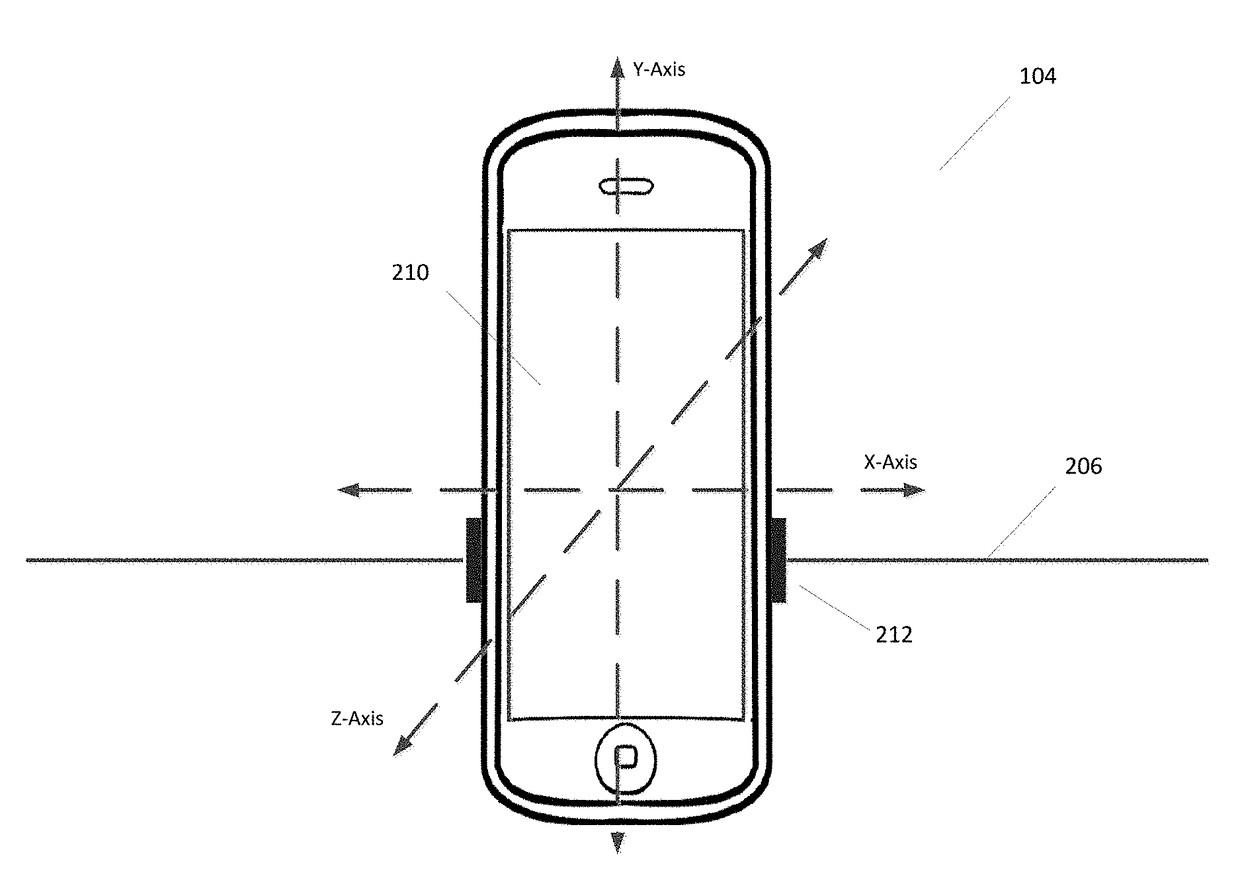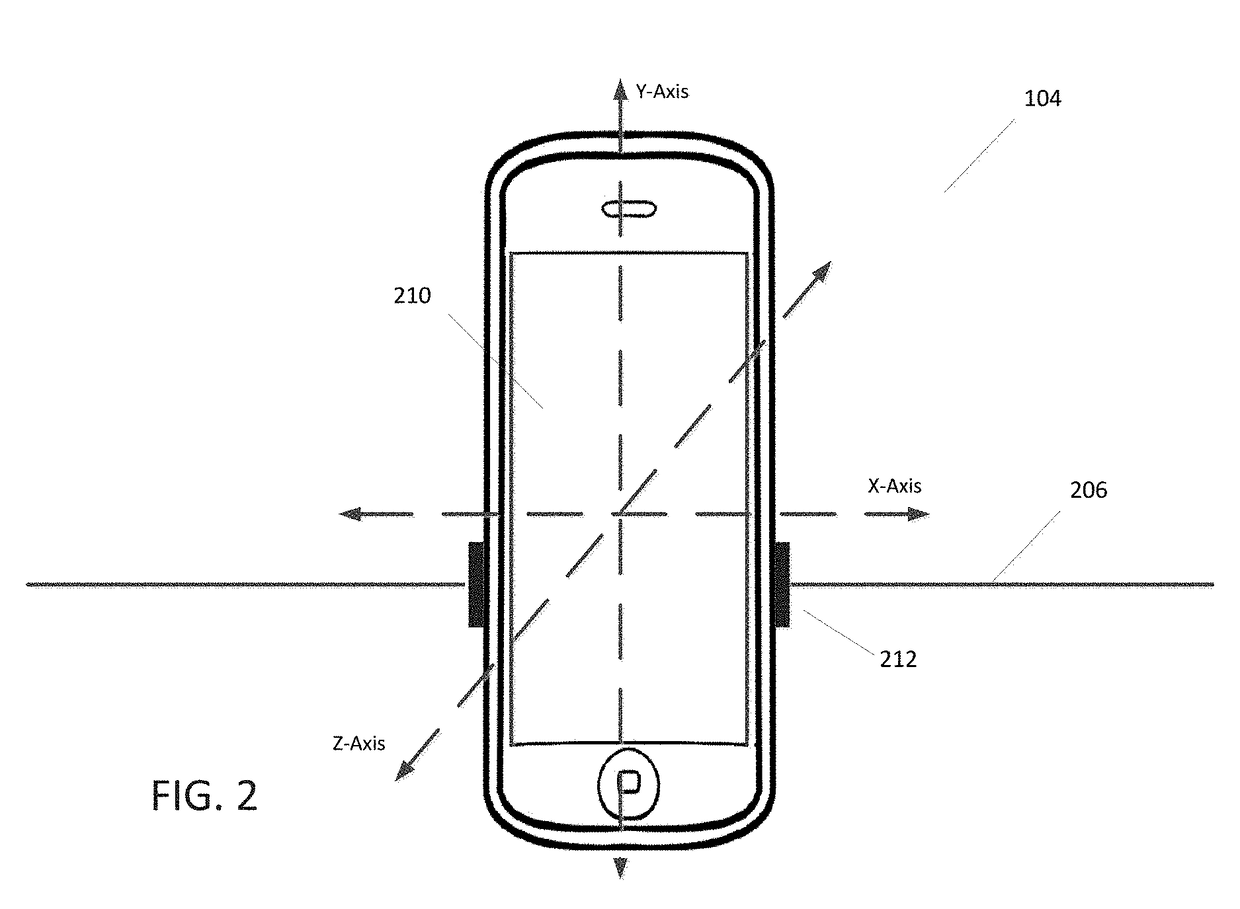Applying motion sensor data to wheel imbalance detection, tire pressure monitoring, and/or tread depth measurement
a motion sensor and data technology, applied in vehicle tyre testing, instruments, transportation and packaging, etc., can solve problems such as over-inflation or under-inflation of one, tire or wheel imbalance, and vehicle suspension, so as to prolong the safety and safe and comfortable operation of the vehicle, and reduce the amount of fuel consumed. , the effect of enhancing safety
- Summary
- Abstract
- Description
- Claims
- Application Information
AI Technical Summary
Benefits of technology
Problems solved by technology
Method used
Image
Examples
Embodiment Construction
[0059]This disclosure relates to systems and techniques to facilitate detecting faults in a vehicle's suspension, such as wheel imbalance, tire pressure issues, and / or tread wear problems, early and easily. More particularly, this disclosure relates to using one or more sensors or sensing functionalities (e.g., an accelerometer, a geolocation module, a speed sensor, and / or a gyroscope) that may be associated with a mobile personal computing device (e.g., a smartphone) to collect data about the vehicle's motion, and processing that data, (e.g., in real-time while the vehicle is being driven around in its ordinary course of use) to facilitate detecting any wheel imbalances, tire pressure issues, and / or excessive tread wear, early and easily. In a typical implementation, if the system identifies the presence of any of these undesirable characteristics, then the system can inform the vehicle owner and / or the driver with an electronic communication (e.g., a text, a push notification, an ...
PUM
 Login to View More
Login to View More Abstract
Description
Claims
Application Information
 Login to View More
Login to View More - R&D
- Intellectual Property
- Life Sciences
- Materials
- Tech Scout
- Unparalleled Data Quality
- Higher Quality Content
- 60% Fewer Hallucinations
Browse by: Latest US Patents, China's latest patents, Technical Efficacy Thesaurus, Application Domain, Technology Topic, Popular Technical Reports.
© 2025 PatSnap. All rights reserved.Legal|Privacy policy|Modern Slavery Act Transparency Statement|Sitemap|About US| Contact US: help@patsnap.com



